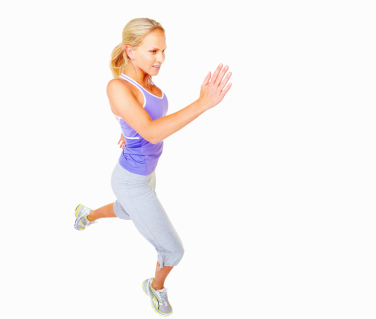How Fast Should I Run Without Putting My Heart in Danger?

I am a beginner runner. How do I know (based on my heart rate) if I'm over doing it and possibly putting my 47-year-old heart in danger? Also, are heart rate monitor watches really accurate? Thank You, Ed
Answer by Dominique:
Hi Ed,
Thanks for your question. I can understand that you have these concerns as a beginning runner. And you are not alone. Health and safety is incredibly important when venturing into a new fitness routine.
And running can be strenuous, so understanding how to start your running journey safely is key. Let's break down your question into a few key sections, so we can make sure we cover everything:
1. Accuracy of heart rate monitors
2. Understanding your heart rate
3. Your maximum heart rate
4. Training zones
5. Extra resources to check out
Accuracy of Heart Rate Monitors

Generally speaking, heart rate monitors, especially those that come with a chest strap, are known to be accurate. The chest strap detects your heart rate directly from your heart's electrical activity, similarly to how an electrocardiogram (ECG) works. So, if precision matters to you, look for a monitor that comes with a strap.
Wrist monitors are ok, but despite advances in technology, are still not very reliable.
Understanding Your Heart Rate
The next part is understanding your heart rate and what it means for determining your running pace. When you're starting as a beginner runner, it's not always easy to know how hard you should be pushing yourself. A simple "rule of thumb" that's often used is to run at a pace where you can still have a conversation. This typically means you're in Zone 1 or Zone 2 of heart rate training (we'll get into zones in a minute). This represents a slow, easy running pace.
Your Maximum Heart Rate

So, until you are better trained, I'd recommend using a proxy such as 220 minus age. It's not a great one, but beter than nothing. Or consult a professional for this measurement if you are over 40 years old and untrained.
Once you are better trained and feel comfortable with high-intensity workouts, follow the link above for a suggested workout that helps you establish your maximum heart rate.
Training Zones
Once you know your max heart rate, you can start figuring out your heart rate training zones. A method I like using is the very simple Zoladz Method.
Zones are simply calculated as a certain distance away from your max heart rate. Each zone targets a different intensity level.
Extra Resources to Check Out

And there we have it Ed, a comprehensive look at heart rate monitor training for runners, how to understand and identify your max heart rate and the importance of running in the right zone safe and effective training. Remember, going "by feel" and running at a pace that feels comfortable is always a good indicator.
The number one mistake beginning runners make is to run too fast. This makes running a lot less enjoyable than it can be. Stick to mostly easy running at the beginning. Zone 1 and Zone 2 running. Develop that sense of what a gentle jog feels like and then see what heart rate it corresponds with.
I hope this information has helped you feel more confident and secure in your running journey. Getting fitter will not put your heart in danger; on the contrary, it will make your heart and your whole body stronger.
All the best.
Kind regards,
Dominique


